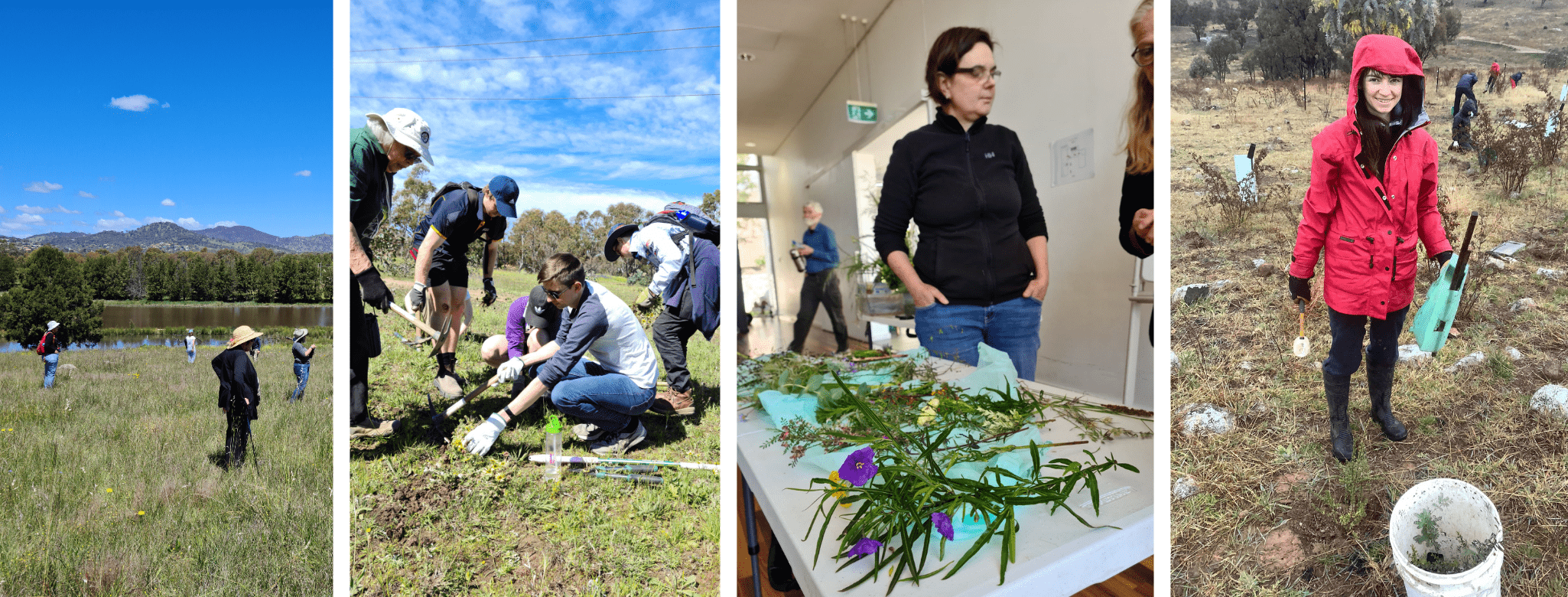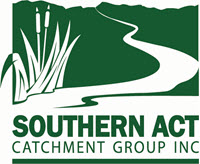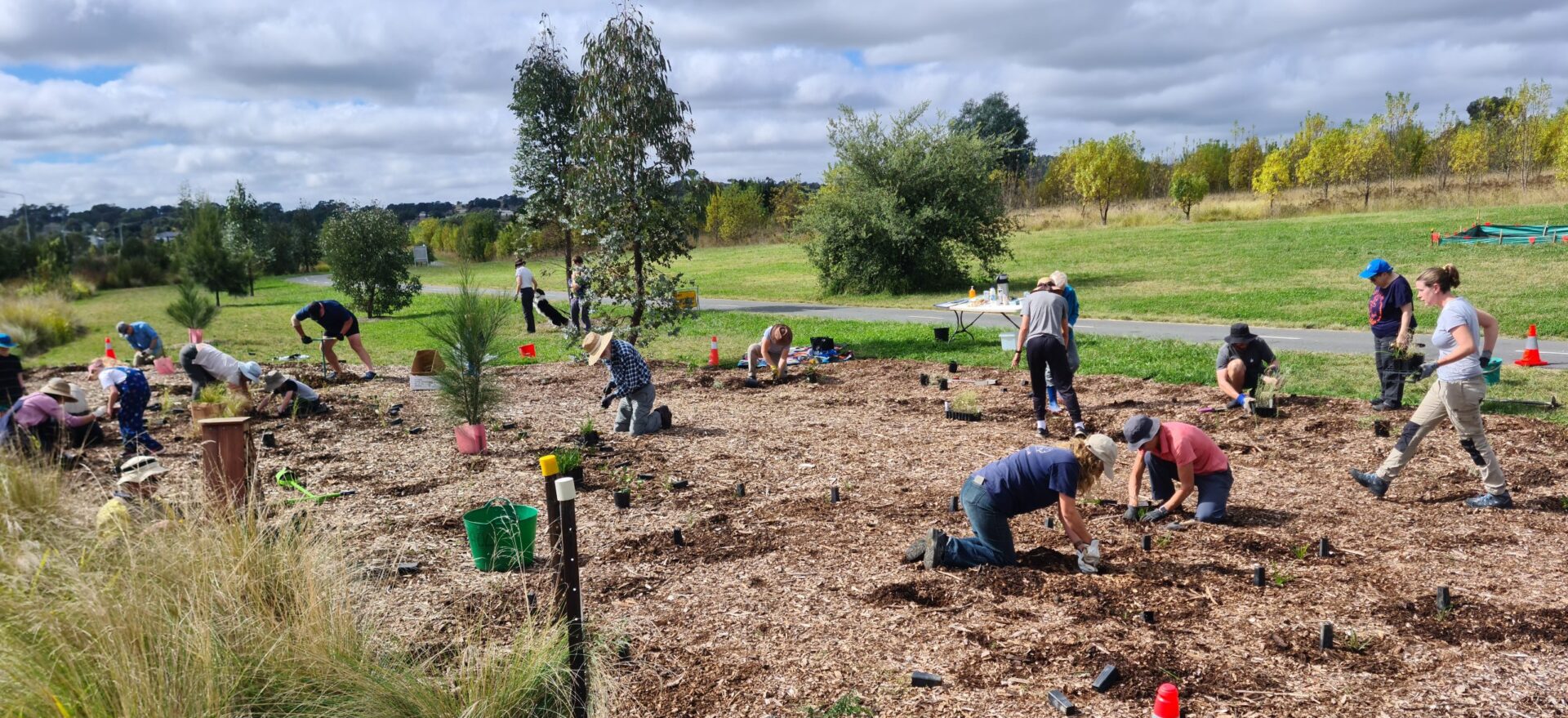Southern ACT Catchment Group works with our member groups on Landcare and Parkcare projects which promote community stewardship and improve our environment- often with the support of government grants.
- Hughes Garran Skeleton Weed Control
- Waterway Erosion Reduction and Chain of Ponds Restoration
- Murrumbidgee River Riparian Revegetation at Castle Hill
- Protecting Woodlands in Spring Creek Station
- Pink-tailed worm lizard habitat on Tuggeranong Hill and Farrer Ridge
The Hughes Garran woodland group has been working to control African Lovegrass, St John’s Wort, and other woody weeds, but have not yet been able to take on Skeleton weed. Skeleton weed is particularly concerning threat to Hughes Garran Woodland due to its increasingly rapid spread throughout the park- and when fully grown it is impossible to walk through. Taking on Skeleton weed is difficult: establish plants cannot be dug out due to their deep root system, and hand pulling just breaks the plant at ground level, allowing for more seed spread. Glyphosate based herbicides have little impact on Skeleton weed. SACTCG has received a grant from the 2019-2020 ACT Environment Grant Program. These funds will employ an approved contractor to spot spray skeleton weed with effective herbicide during the most effective stages of growth; allow the purchase of native grass seed to reseed sprayed areas, and support volunteer working bees to continue removing other invasive plants by hand.
As part of the 2014-2015 ACT Environment Grants, this project utilised erosion reduction methods such as using local rocks, and coir logs to impede erosion on the creek banks. Works were completed for three creeks using appropriate methods for each site. This required large machinery and a labour force to execute the work well, with preparations made to ensure minimal impact to the soil and wider environment. Monitoring of the site is ongoing, and so far the works have proven to be very effective in erosion management.
A revegetation project for the frontage of a degraded river adjacent to Castle Hill Homestead in Tharwa. The aim of this project was to improve the complexity of the vegetation, improve the soil quality and reduce the amount of sediment entering the river during heavy rain events. A contractor was engaged to dig holes, and Conservation Volunteers Australia teams worked to plant approximately 2000 native seedlings: nine hectares were planted over 3km river frontage. Trees were planted in an identified riparian zone as well as into the property to adjoin to a large area of EPBC listed Red Gum Yellow Box woodland on the property. Trees were planted in clumps with spaces between to allow for movement of wildlife and vehicle access if required. The planned planting at Castle Hill was completed on time with some funding left over, which was re-allocated to planting on Pine Island to increase native understory. SACTCG received an ACT Environment Grant 2015-2016 for continued planting at the Castle Hill property to provide connectivity between all the existing patches along the river and with the surrounding EPBC listed woodland.
SACTCG worked with two landholders on contiguous land on Spring Station Creek to reduce Blackberry infestations in the riparian zone and significant patches of EPBC listed Yellow Box - Red Gum Woodland in the catchment. With 7.18 ha treated over the project, activities complimented efforts undertaken to control Blackberry by these landholders and by neighbouring properties and reduced seed load in the catchment and potential down steam contamination into the Murrumbidgee River.
The project also provided an opportunity to assess the effectiveness and affordability of unmanned aerial spraying for chemical weed treatments and compared this to a traditional treatment technique using a twin real manually operated QuickSpray trailer. The trial of the drone provided local farmers with access to new technology and informed potential future use of aerial treatment methods on typical terrain in the region. See the full report of the trial here.
This project was funded by 2018-2019 ACT Environment Grants.
SACTCG worked with Friends of Tuggeranong Hill and Farrer Ridge ParkCare Group to protect Pink-tailed-Worm lizard (Aprasia parapulchella) populations on Tuggeranong Hill Nature Reserve and Farrer Ridge. This project included the treatment of invasive plants impacting on significant habitat patches in line with the ACT Action Plan for the species, the Canberra Nature Park Draft Reserve Management Plan 2019 and the Osborne W and Wong D 2012 case study on the long term survival of Pink-tailed –Worm lizard on Mount Taylor Reserve. Significantly this project built on the work of two previous SACTCG projects on Mt Taylor to protect stronghold populations of Aprasia parapulchella and facilitating a wholistic approach to protecting this habitat in the southern system of reserves in Canberra Nature Park. Key activities undertaken on Tuggeranong Hill were the removal of pest plants invading the edges of this high and medium quality habitat and treatment of early incursions of African Love Grass (ALG) along walking and fire trails running within and along the habitat edge preventing greater incursions of this weed into the reserve. Friends of Tuggeranong Hill and Farrer Ridge ParkCare Group provided significant in-kind contributions in the form of advice, ongoing monitoring of areas as well as removal of pest plant regrowth. They also undertook hand removal of weeds in the Pink-tailed Worm-lizard habitat and planting of understory plants and grasses for species regeneration and preservation.

See our other projects at the pages below:

